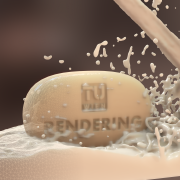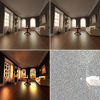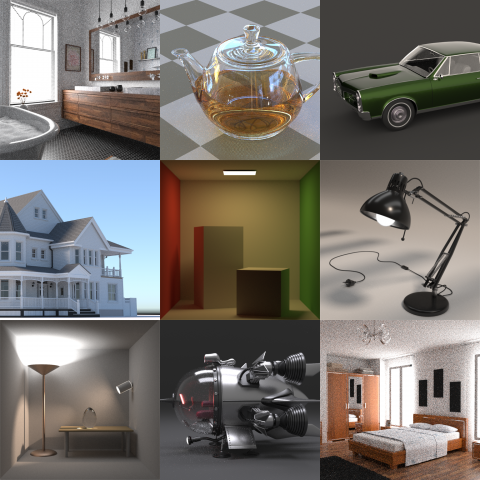Rendering photorealistic images has been a long-standing problem in computer graphics. Photorealistic image synthesis is still a vibrant and active research field with many open problems. Most offline methods use path-sampling techniques to evaluate the rendering equation to account for sophisticated light-transport effects. However, this procedure takes up to hours, where the inaccuracy of the initial estimation shows up as noise in the resulting images. In order to alleviate this, sophisticated light-transport algorithms and a number of noise-filtering techniques have been developed. Despite the fact that a large body of research exists in both directions, there are no standardized datasets that enable us to adequately assess their strengths and weaknesses. It would be of utmost importance to be able to compare existing light-transport and noise-filtering algorithms in a scientifically sound way.
In this project, we will therefore create such a dataset, and provide the following contributions:
(1) a set of scene descriptions that can be used to test individual features of these systems, e.g., dealing with a variety of material models, high-resolution geometry, textured inputs, and a variety of lighting effects.
(2) a large number of rendered images of these scenes with different noisiness, auxiliary buffers to maximize compatibility with the state-of-the-art noise filtering algorithms, and fully converged reference images for easy comparisons against the denoised outputs, and
(3) a method to ensure parameter coverage, so that the dataset does not become prohibitively large, but still covers salient rendering configurations, that reveal the most interesting cases.
In summary, we propose to create a fertile ground for assessing the quality of different photorealistic rendering techniques. We believe that this would lead to significantly higher quality scientific works in the field.
Funding
- FWF ORD 61
News
Research Areas
- In this area, we concentrate on algorithms that synthesize images to depict 3D models or scenes, often by simulating or approximating the physics of light.
Publications
7 Publications found:
Bibtex, HTML (Advanced, Expert), JSON (with referenced objects), CSV, Permalink



 image
image paper
paper
 paper
paper
 technical-report
technical-report thesis
thesis thesis
thesis
 paper_preprint
paper_preprint
 poster
poster thesis
thesis